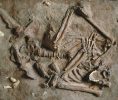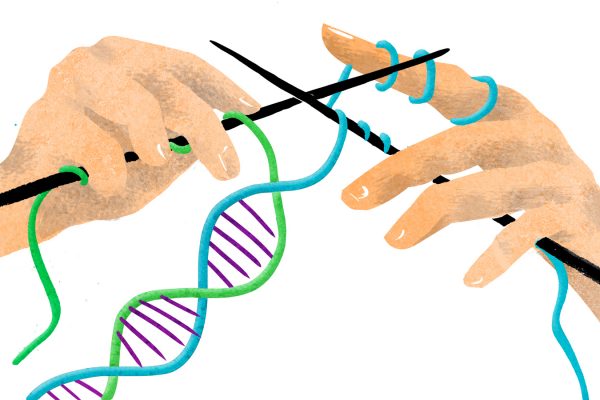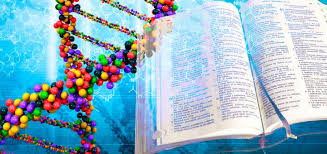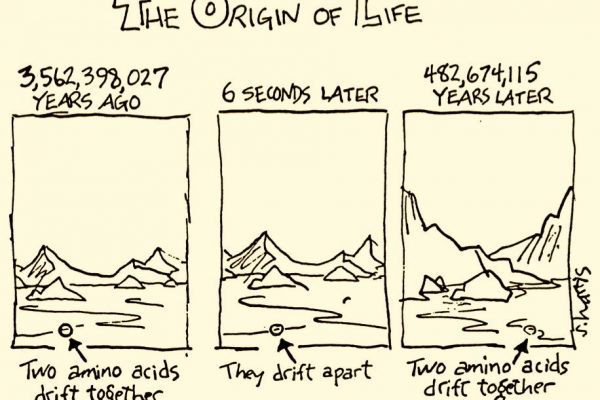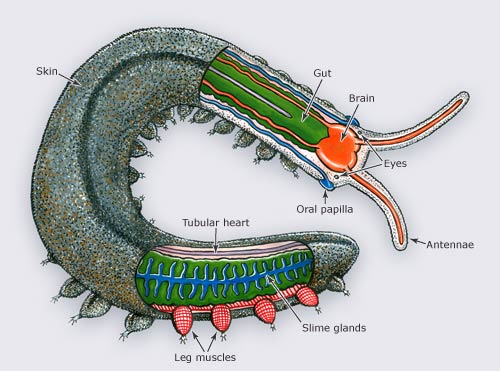How Darwinism Contributed to Modern Views on Abortion, Infanticide, and Euthanasia
Featured as a back-of-page article in the CSABC Quarterly Letter of June 2008 Introduced by Richard Peachey A specialist in modern German history argues that evolutionary thinking contributed significantly to our current “culture of death”! All quotations are from Richard Weikart. 2004. From Darwin to Hitler: Evolutionary Ethics, Eugenics, and
The “Science” of Paleoanthropology (Human Fossils) — Exposed!
Introduced by Richard Peachey In this article, an evolutionary paleoanthropologist describes the subjectivity and questionable science inherent in his own discipline! All quotations are from Roger Lewin. 1997. Bones of Contention. 2nd edition. Chicago: University of Chicago Press. Page number references from this book are given at the beginning of
“Flat Earthers” — A Half-Baked Charge Against Creationists!
Featured as a back-of-page article in the CSABC Quarterly Letter of March 2009 by Richard Peachey
Major Twentieth Century Theories of Evolution: The Neo-Darwinian Synthesis and Punctuated Equilibrium
by Richard Peachey The two modern theories differ over the tempo (timing) and mode (mechanism) of evolution. Natural selection is of primary importance for Neo-Darwinists, but not for those who hold to Punctuated Equilibrium. The two views also disagree on the relationship of macroevolution to microevolution. 1. The Neo-Darwinian Synthesis
Can Scientists Create “Life” in a Test Tube?
by Richard Peachey In what many consider to be a classical “origin of life” experiment, Stanley Miller synthesized some amino acids (building blocks of proteins) from a circulating mixture of gases hypothesized to represent Earth’s primordial atmosphere. Miller used an electrical spark to simulate a lightning-like energy source. Although this
Darwin’s Use of Lamarck’s “Laws”
by Richard Peachey The French scientist Jean-Baptiste de Lamarck (1744-1829) is noted for two “laws” which summarize his evolutionary thought: (1) The Law of Use and Disuse — The parts of an organism’s body that are used become more developed; parts that are not used become smaller and may disappear.
Mistaken Microfossils! (And Other Erroneous Evidence of Early Earthlife)
by Richard Peachey BEFORE 2002: When evolutionists discussed life on the early Earth, they could point with confidence to a variety of apparently well-documented evidence from several locations around the globe (Australia, Greenland, South Africa). TODAY: Every piece of alleged evidence has now been thrown into doubt, and the field
How a Literal Understanding of Genesis Promoted the Rise of Modern Science!
In this article, a non-creationist historian of science describes how a literal understanding of Genesis, as favoured by the Protestant Reformers, actually promoted rather than hindered the rise of modern science! All quotations are from Peter Harrison. 1998. The Bible, Protestantism, and the rise of natural science. Cambridge, U.K.: Cambridge
What is the Most Serious Problem for All Evolutionary “Origin of Life” Theories?
by George Wald, Harvard biologist and Nobel laureate (Scientific American, Aug 1954, pp. 44, 49-50) “In the vast majority of the processes in which we are interested the point of equilibrium lies far over toward the side of dissolution. That is to say, spontaneous dissolution is much more probable, and
Is Peripatus a Valid Evolutionary Intermediate?
by Richard Peachey Peripatus is an organism classified within the phylum Onychophora, a group known as “velvet worms” or “onychophorans” (meaning “claw-bearers”). These animals live mostly in humid forests, especially in the tropics. They hide by day under rotting logs and in leaf litter, and hunt for prey at night.


